by Lorri | Dec 11, 2011 | UnCorked
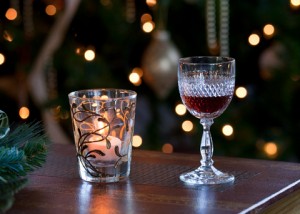 We all have our wine traditions and for me it’s port wine at Christmas. I cannot imagine ushering in the holiday without this one-of-a kind, fortified masterpiece.
We all have our wine traditions and for me it’s port wine at Christmas. I cannot imagine ushering in the holiday without this one-of-a kind, fortified masterpiece.
It takes its name from the city of Oporto, Portugal, and possesses many unique viticulture and winemaking techniques. The growing area, Portugal’s Douro Valley, has very hot summers and cold winters, making it a rather inhospitable area for viticulture.
Its isolated landscape is just as uninviting with its steep hillsides, poor, dry soils and archaic-looking planting terraces. In spite of the weather conditions and poor terrain, the port grapes thrive.
As much as the terroir affects the final product, the process used in making port is unmatched throughout the world. Just after harvest, a celebration of sorts begins with the traditional foot-treading in open trough wine vats by families and winery workers. They march, walk and even dance in keeping with this winemaking tradition. This may seem a bit awkward to envision, but the human foot is perfect for the task.
Port styles range from crusted and ruby to tawny, all blended from wines of different vintages made in different years and having spent time in wood barrels. These styles are ready to drink immediately after bottling. Vintage and single quinta (house) ports differ in that they spend minimal time in wood barrels before being bottled for the long, slow aging process.
THE VALUE
- NV Graham’s Six Grapes Porto, Portugal (about $32 retail)
THE SPLURGE
- NV Taylor Fladgate 20 Year Tawny Port, Portugal (about $74 retail)
by Lorri | Nov 30, 2011 | UnCorked
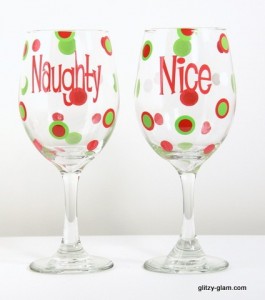 With all of the forthcoming celebrations, now is the time to get organized and let the wine be the easiest part of your entertaining. The following are some common questions.
With all of the forthcoming celebrations, now is the time to get organized and let the wine be the easiest part of your entertaining. The following are some common questions.
Can I use the same glass for red, white, Champagne, tea and water?
One glass can easily be used for all except the bubbly. For all-in-one serving, look for a glass size in between the traditional white and red. But for Champagne, the flute is the best choice. Without the rolling celebratory bubbles, this style of wine loses its luster in traditional stemware.
How many servings are in a wine bottle?
A standard wine bottle holds 750 milliliters, which is about 25 ounces. The average pour for any glassware should be about 5 ounces, giving you five servings per bottle. (Keep in mind if you are “filling” wine glasses, especially large red wine stems, expect to get much less per bottle.)
How much wine do I need to buy?
It may seem excessive but a good rule is it is better to have too much than not enough. For a wine-only gathering (no cocktails or beer) lasting two hours, plan for two to three glasses per person. So for a party with 20 guests, 12 bottles would be sufficient. For a four-hour dinner party, plan four to five glasses per person. A four-hour dinner party for eight guests would require roughly eight bottles.
Should I rent glassware or buy?
If you’ll be entertaining more than 30, rental makes sense. Renting costs, on average, a little under $1 per glass but most importantly there’s no clean up or future storage issues. However, if you entertain large groups regularly, you may want to keep your eye out for end-of-season bargains on wine glasses in chain stores for a future glassware stash.
How do I get red wine stains out of my carpet?
I always keep a bottle of Wine Away on hand for stains. It’s the best remover I’ve found for carpet and upholstery and costs about $9 a bottle. If you don’t have a wine-specific cleaner, as a last resort, use a paper towel to blot up as much of the stain as possible, saturate the spot with cold water and blot again. Then, mix a paste of three parts baking soda to one part water and put over spot. Let the paste dry, then vacuum.
How much should I spend per bottle for entertaining?
There’s no one-size-fits all answer but if it’s a large cocktail party, choose a wine that sells from $8 to $12. Retailers often offer Christmas specials and added discount incentives on quality wines making it easy for great values. For a dinner party, best advice is spending as much as you can afford. If you slaved in the kitchen preparing perfect foods, sauces and desserts, showcase the best wine your budget will allow.
by Lorri | Nov 23, 2011 | UnCorked
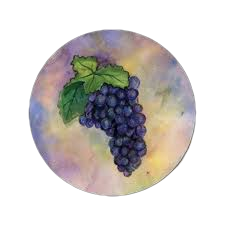 I can’t say I’ve ever considered myself one to be frustrated with a grape. Until now. Over the past few weeks I have experienced the same combination of obsession and confusion the rest of the world seems to have with pinot noir.
I can’t say I’ve ever considered myself one to be frustrated with a grape. Until now. Over the past few weeks I have experienced the same combination of obsession and confusion the rest of the world seems to have with pinot noir.
I set out on a journey to explore this alluring and mysterious grape by scrutinizing my past tasting notes and, of course, tasting a lot of wines in the process. Pinot noir is an incredibly finicky grape that demands ideal growing conditions and is rarely open to any coaxing in the winery. Simply said, it is one tough grape to get right.
As for the splurges over $50 I’ve tasted, frustration was virtually non-existent save for the fact that most of the wines are made in minuscule quantities. Honestly, there was not a bad one in the bunch. And it makes perfect sense if we keep in mind that these are the wines that earned pinot noir its cult status from producers in France, California and Oregon. Not only were there no complaints, but with each taste it became clearer as to why we obsess over this grape. Its simply sublime at its best.
It was the value category that gave me more than a few rough days of tasting. Bottle after bottle in the under $15 range proved to be hit or miss. The blame may not be the grape but the crazed popularity of a few years ago that resulted in plantings anywhere and everywhere, leaving us to wade through a river of not so great wines made from this finicky grape.
The bottom line is that if you wish to experience the greatness of pinot noir, be advised that this grapes best values are rarely bargain priced.
THE VALUE
- 2009 Mark West Central Coast Pinot Noir, California (about $13 retail)
THE SPLURGE
- 2008 Siduri Santa Lucia Pinot Noir, California (about $43 retail)
by Lorri | Nov 16, 2011 | UnCorked
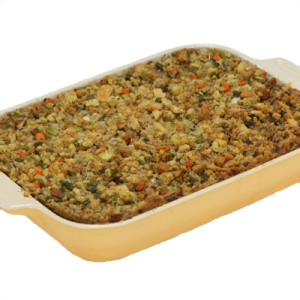 Selecting the right wine to serve with a special dinner can be one of the biggest challenges in planning a celebration. But with the wide variety of flavors — savory green beans, candied sweet potatoes, tart cranberry sauce, creamy mashed potatoes, rich pecan pie — selecting the right wine for Thanksgiving dinner can seem downright impossible.
Selecting the right wine to serve with a special dinner can be one of the biggest challenges in planning a celebration. But with the wide variety of flavors — savory green beans, candied sweet potatoes, tart cranberry sauce, creamy mashed potatoes, rich pecan pie — selecting the right wine for Thanksgiving dinner can seem downright impossible.
Fortunately the common centerpiece of the meal that prevails year after year is the traditional roasted turkey.
Much like chicken, roasted or baked turkey is generally straightforward with its light and neutral taste and texture and an easy wine pair-up. As long as you don’t choose a bold, full-bodied robust wine that will overwhelm the bird, most options are usually a safe bet. But when we start adding the dressing (or stuffing, if you prefer) to this beloved bird we begin the pairing dilemma.
Dressing flavors can be nutty, spicy, earthy and even sweet. That’s a lot to expect from a single wine. As we do in all ideal wine and food pairings, be sure to start with the main flavors in the dish.
Traditional Thanksgiving stuffing (white bread and/or cornbread, celery, onion and sage) matches well with the light refreshing flavors of viognier, pinot gris and sauvignon blanc.
THE VALUE
- 2010 Wente Vineyards Louis Mel Sauvignon Blanc, California (about $13 retail)
THE SPLURGE
- 2010 Presqu’ile Santa Barbara Sauvignon Blanc, California (about $22 retail)
Dressings with dried fruits such as cherries, apples and pears need a wine with touch of sweetness like an off-dry Riesling to complement the fruit.
THE VALUES
- 2010 Franken Silvaner Spatlese Riesling, Germany (about $14 retail)
THE SPLURGES
- 2009 Rudi Wiest Monchhof Estate Riesling, Germany (about $20 retail)
Wild rice brings a nutty flavor to stuffing. A fresh fruity red merlot is an excellent complement.
THE VALUE
- 2009 Michel Lynch Merlot, France (about $12 retail)
THE SPLURGE
- 2009 Bell Wine Cellars Yountville Merlot, California (about $36 retail)
Mushroom stuffing is one of the most wine-friendly you can serve. If other ingredients do not overpower the earthy flavors it shines with pinot noir.
THE VALUE
- 2009 Concannon Winery Central Coast Pinot Noir, California (about $12 retail)
THE SPLURGE
- 2009 Presqu’ile Rim Rock Vineyard Pinot Noir, California (about $55 retail)
by Lorri | Nov 9, 2011 | UnCorked
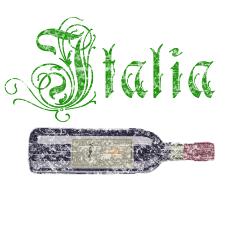 Sangiovese, Nebbiolo and Barbera, despite their discreet natures, are sometimes called the “Italian Mob.” They earned this moniker because of their dominance in the Italian wine industry. Their hierarchy status rarely gets recognition on labels, and the wines take a back seat to the international familiarity of chardonnay and cabernet sauvignon. But these wines shouldn’t be ignored.
Sangiovese, Nebbiolo and Barbera, despite their discreet natures, are sometimes called the “Italian Mob.” They earned this moniker because of their dominance in the Italian wine industry. Their hierarchy status rarely gets recognition on labels, and the wines take a back seat to the international familiarity of chardonnay and cabernet sauvignon. But these wines shouldn’t be ignored.
Sangiovese has been associated with the inexpensive raffia-covered bottles sitting on restaurant tables around the world. But at its best, it is the grape behind Chianti from the Tuscany region.
These serious wines are brilliantly concentrated with earthy rich plum and black cherry, and because of their gripping tannins, they have the ability to age to perfection.
Nebbiolo, the famous grape behind the Barolo wine, is grown in Italy’s northwest region of Piedmont.
When compared to other grapes in this lineup, it is by far the most renowned for making aggressive, highly tannic red wines with alluring aromas and flavors — floral, roasted meats and spice.
Last but not least is the Barbera, which has played second fiddle to the Nebbiolo. Barbera grows throughout Italy, but it is in the vineyards of Piedmont that for centuries the most concentrated and complex examples of this grape have been grown. Its style can be fresh and fruity with cherry flavors or a full-bodied intense wine.
THE VALUES
- 2009 Cecchi Chianti Classico, Italy (about $15 retail)
- 2009 Da Vinci Chianti, Italy (about $21 retail)
- 2009 Michele Chiarlo Barbera d’ Asti, Italy (about $15 retail)
THE SPLURGES
- 2009 Santa Margherita Chianti, Italy (about $30 retail)
- 2009 Antinori Peppoli Chianti Classico, Italy (about $30 retail)
by Lorri | Nov 2, 2011 | UnCorked
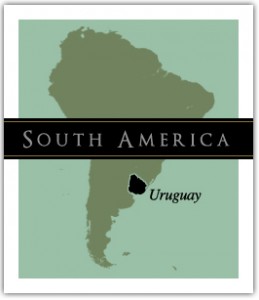 The global choices in wine continue to grow, with Uruguay as the next exciting place to explore. The South American country has an ideal climate for grape growing and shares many similarities with other fine wine regions in the world.
The global choices in wine continue to grow, with Uruguay as the next exciting place to explore. The South American country has an ideal climate for grape growing and shares many similarities with other fine wine regions in the world.
Situated in the Southern Hemisphere on the 34th parallel, Uruguay has an ideal balance of sun, rainfall, temperature and gentle hills, requiring little if any artificial irrigation. This balance is influenced by Atlantic breezes, much like the Bordeaux region of France, but with the intensity of sunlight similar to Argentina and Chile.
Not only does Uruguay offer unique growing conditions, it also has a niche almost all to itself, the tannat grape. It’s a little-known variety originally grown in southwest France and introduced into the country in the late 1800s. It’s considered the national variety, adapting itself perfectly to the local soil and climate. The grape represents a third of all wine produced in Uruguay.
The tannat grape has been known for its extremely high tannins (which also explains how the grape got its name) and often needs extensive aging or blending with other grapes just to soften. But Uruguayan winemakers are producing a more approachable wine with a lower alcohol content.
The thick skins of the grape give the wine a deep color. It has the rich flavors of chocolate, spice and raspberry. This new tannat will be the exceptional style the world will be seeing more of before long.
THE VALUE
- 2010 Pizzorno Don Prospero Tannat, Uruguay (about $12 retail)
THE SPLURGE
- 2009 Pizzorno Reserva Tannat, Uruguay (about $19 retail)
 We all have our wine traditions and for me it’s port wine at Christmas. I cannot imagine ushering in the holiday without this one-of-a kind, fortified masterpiece.
We all have our wine traditions and for me it’s port wine at Christmas. I cannot imagine ushering in the holiday without this one-of-a kind, fortified masterpiece. With all of the forthcoming celebrations, now is the time to get organized and let the wine be the easiest part of your entertaining. The following are some common questions.
With all of the forthcoming celebrations, now is the time to get organized and let the wine be the easiest part of your entertaining. The following are some common questions.
 Selecting the right wine to serve with a special dinner can be one of the biggest challenges in planning a celebration. But with the wide variety of flavors — savory green beans, candied sweet potatoes, tart cranberry sauce, creamy mashed potatoes, rich pecan pie — selecting the right wine for Thanksgiving dinner can seem downright impossible.
Selecting the right wine to serve with a special dinner can be one of the biggest challenges in planning a celebration. But with the wide variety of flavors — savory green beans, candied sweet potatoes, tart cranberry sauce, creamy mashed potatoes, rich pecan pie — selecting the right wine for Thanksgiving dinner can seem downright impossible. Sangiovese, Nebbiolo and Barbera, despite their discreet natures, are sometimes called the “Italian Mob.” They earned this moniker because of their dominance in the Italian wine industry. Their hierarchy status rarely gets recognition on labels, and the wines take a back seat to the international familiarity of chardonnay and cabernet sauvignon. But these wines shouldn’t be ignored.
Sangiovese, Nebbiolo and Barbera, despite their discreet natures, are sometimes called the “Italian Mob.” They earned this moniker because of their dominance in the Italian wine industry. Their hierarchy status rarely gets recognition on labels, and the wines take a back seat to the international familiarity of chardonnay and cabernet sauvignon. But these wines shouldn’t be ignored.